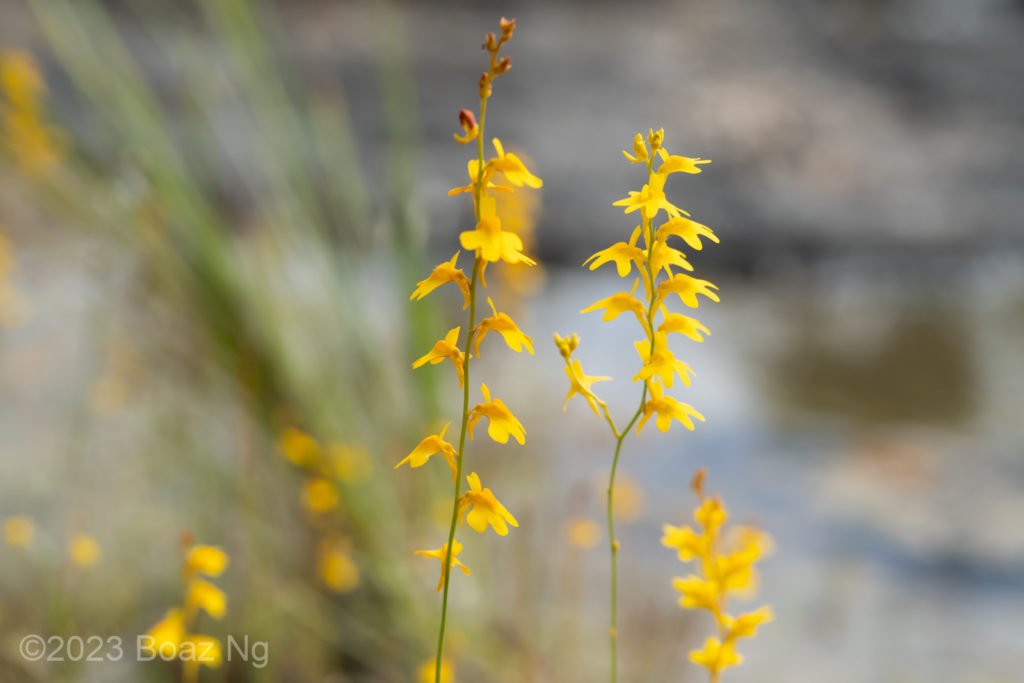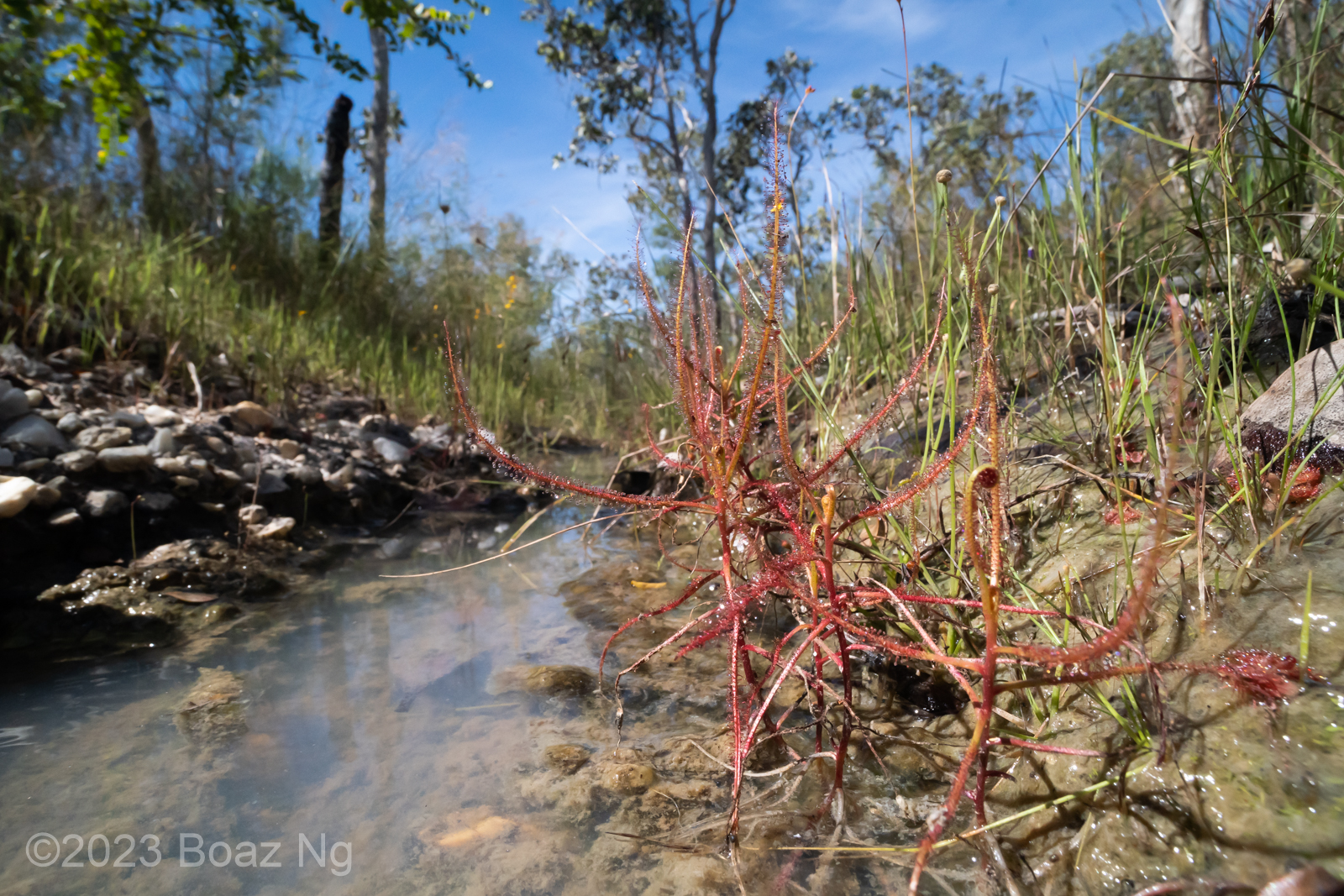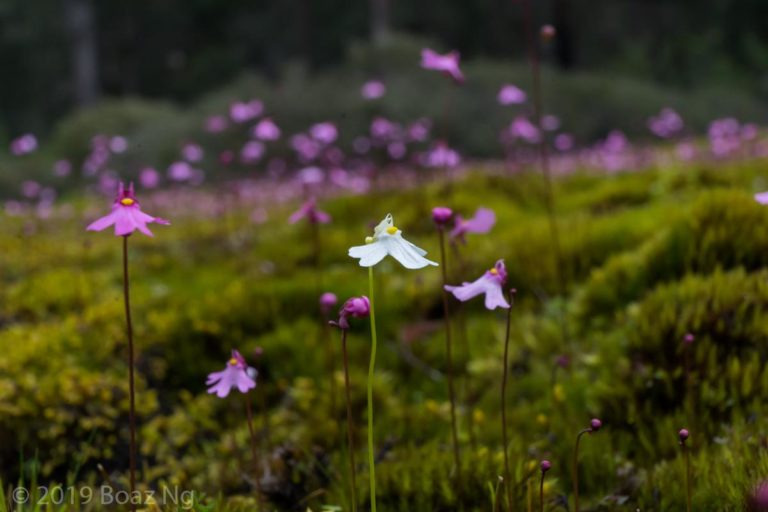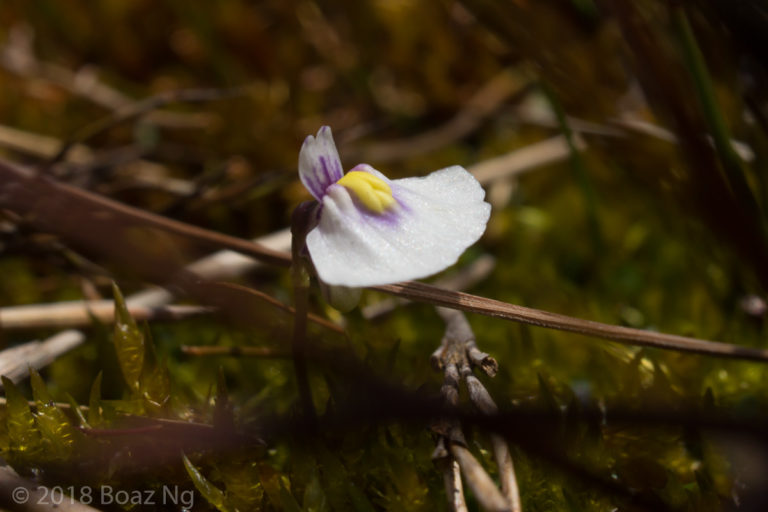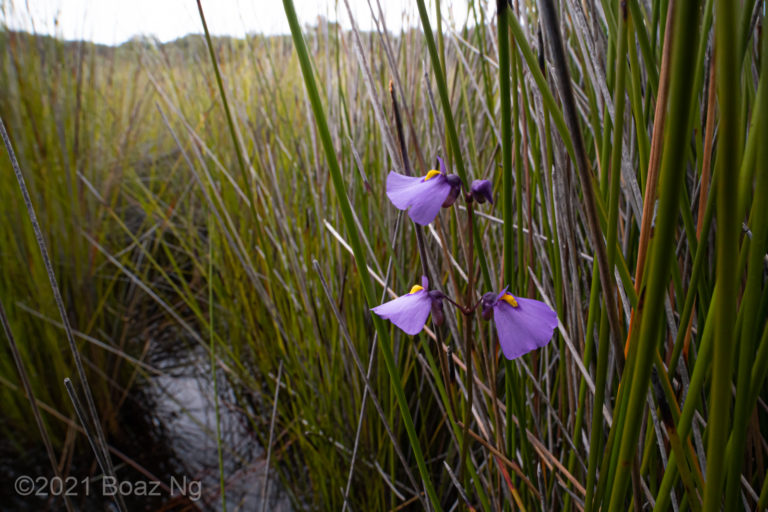Tropical savannah habitats encompass the majority of inland Cape York. These environments are characterised by open, grassy woodlands that are under the influence of the monsoon. Carnivorous plants are mainly found near creek systems, which swell during the wet season to form lush, moist niches perfect for the plants.
Utricularia terraereginae grows in association with magnetic termite mounds in broad, shaded creeks around half way up the cape. The species has large purple blooms which feature a widely flared ‘skirt’ shaped corolla. It prefers to grow in grass at the edges of creeks that are persistently wet into the start of the dry season, just below where groundwater begins to percolate out of the surrounding forest into the creek bed.
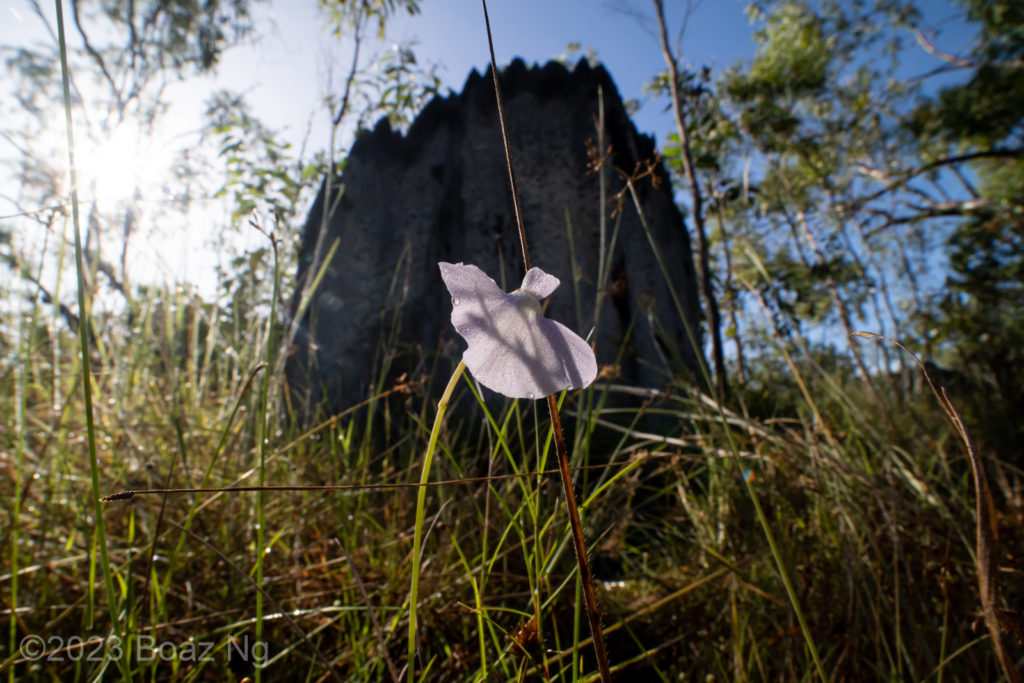
Drosera serpens is also common in these creeklines, enjoying the waterlogged substrate. In these shaded areas of the monsoon scrubland, the standard green variety is most frequently encountered. The sundew is named for its scrambling habit, using its spidery arms to prop itself up against the dense grasses surrounding it.
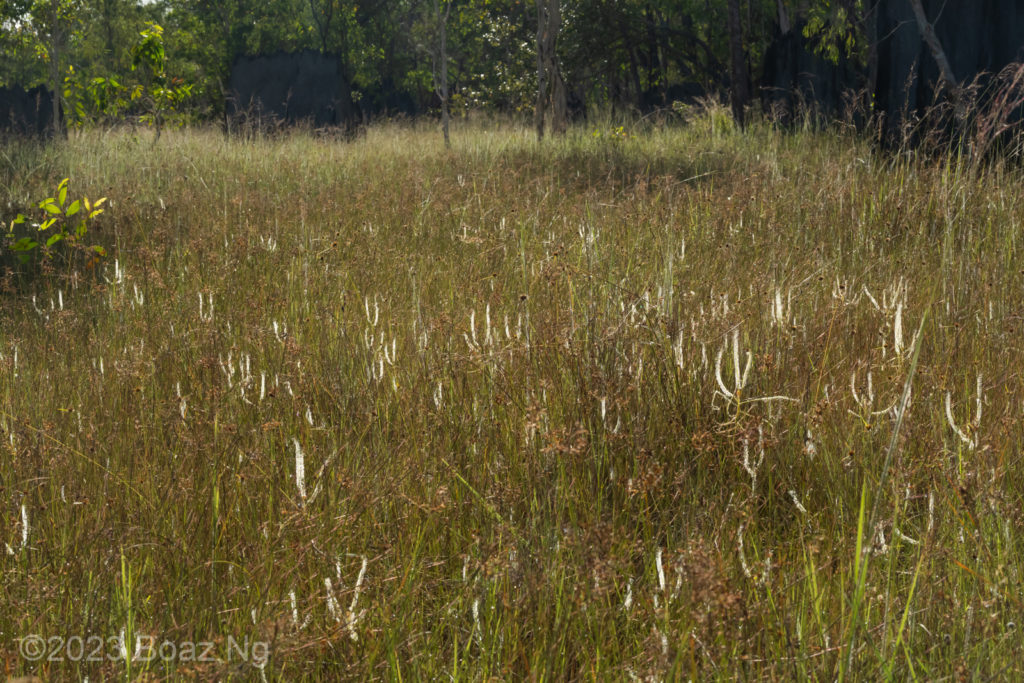
Not far away in the drier forests surrounding the creeks grows an undescribed sundew in the section Lasiocephala. The taxon differs from D. petiolaris from the coast by its much narrower petioles, larger size and preference for inland savannah woodland. This complex is not well studied on Cape York, possibly owing to a general lack of available morphological characteristics for distinctions, and further investigation might find even more cryptic related taxa.
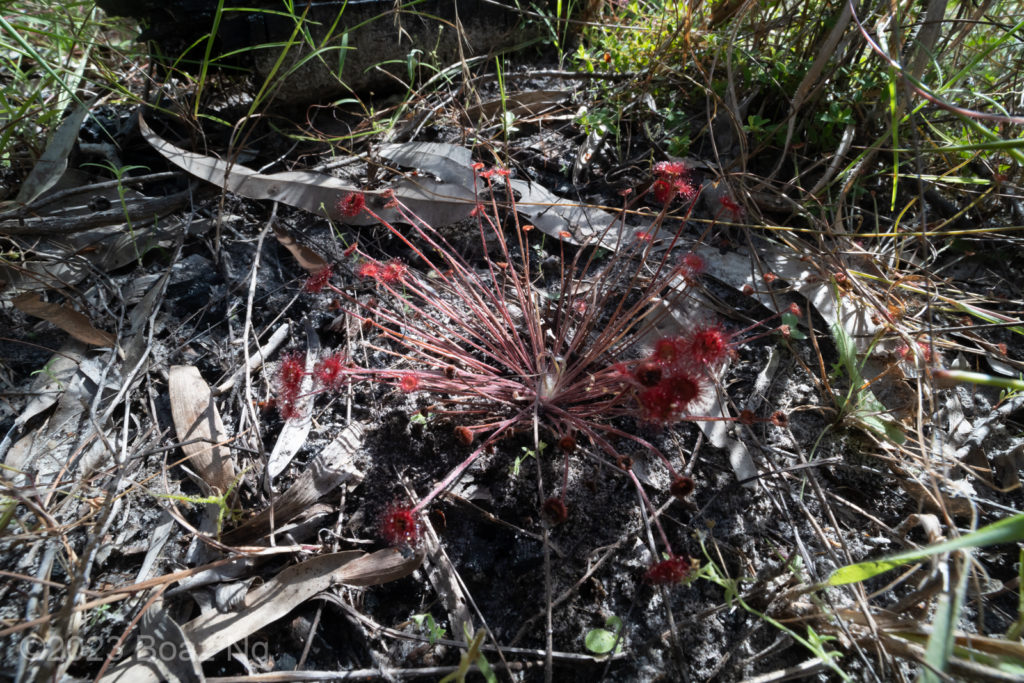
In places where the bedrock outcrops at the surface, the soil is much shallower and sandier. As a result, the predominant vegetation shifts from forested woodland to shrubby heathland. This habitat is much more exposed to the elements and even more carnivorous plants can be found there.
Utricularia simmonsii grows in fine grey silt in seepages draining into the watercourses, and also in sheltered, sandy deposits in small creeks. It is the smallest known bladderwort, with blooms that barely reach over 1 mm in length. In wetter habitats, the scapes can reach about half a center in height – dwarfing specimens in drier niches but still remaining extremely small compared to other bladderworts.
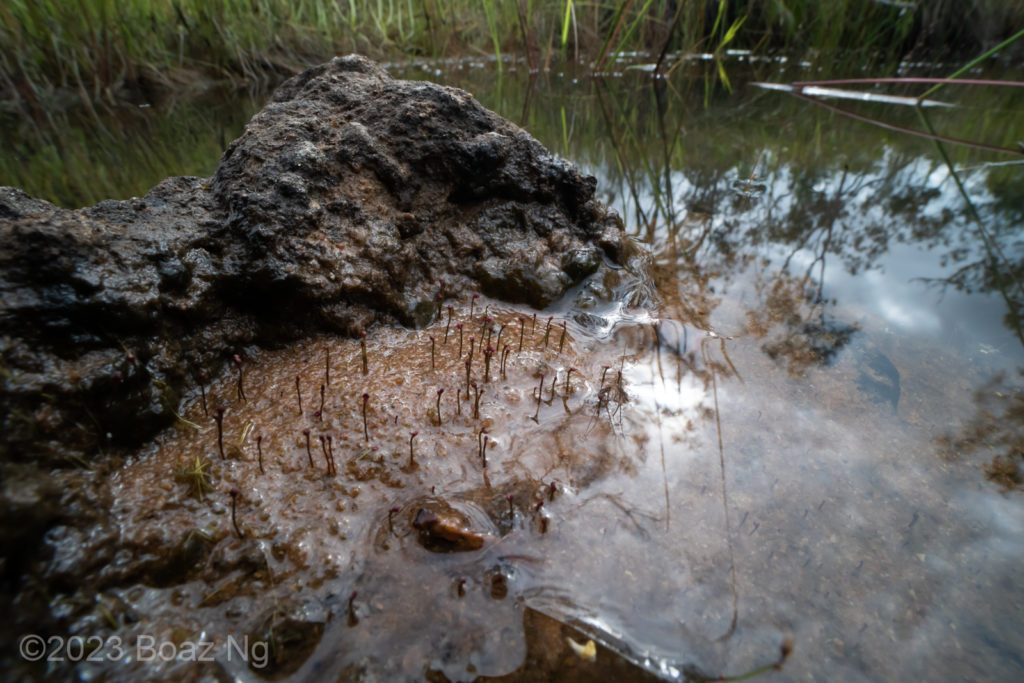
The red form of Drosera serpens starts to appear in the savannah shrubland, becoming more common in the heathlands further north on the Cape. Compared to the green form in forested grasslands, the red plants prefer to grow in more exposed aspects such as full-sun seepages. At one location, I found hundreds of plants growing together in wet skeletal soils atop a rock platform.
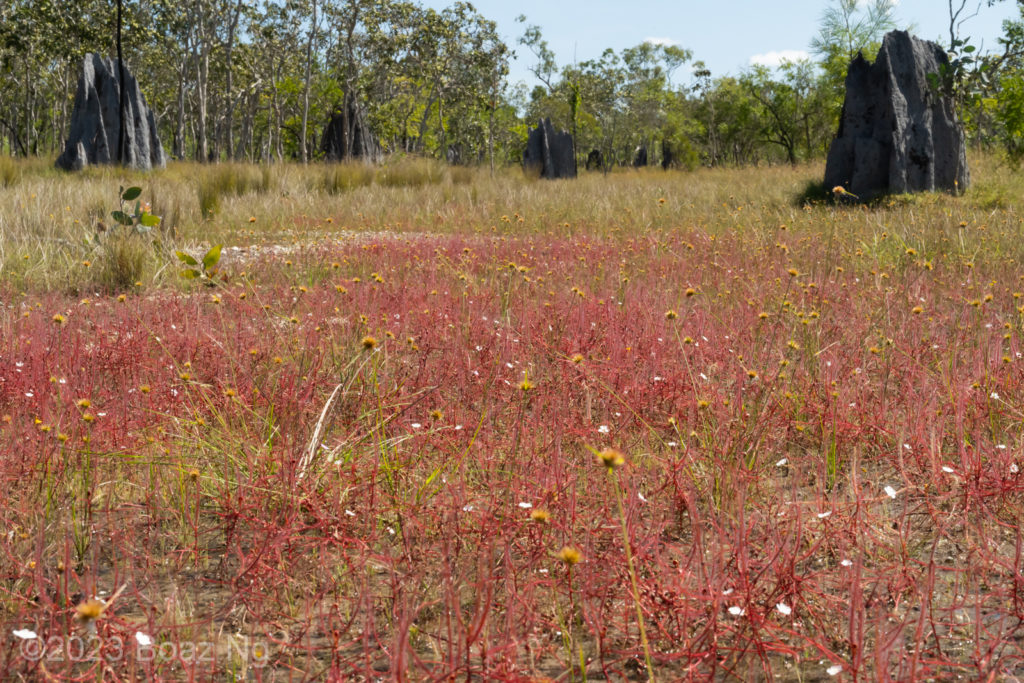
In the exposed savannah, small creeklines often carve a depression into the crumbly sandstone bedrock, forming sloped seepages on their eroded banks. The constant source of water percolating from the surrounding landscape forms the perfect habitat for diverse carnivorous plant communities. Drosera burmanii is one of the most common sundews on the Cape, and their glistening rosettes are basically found anywhere that’s wet.
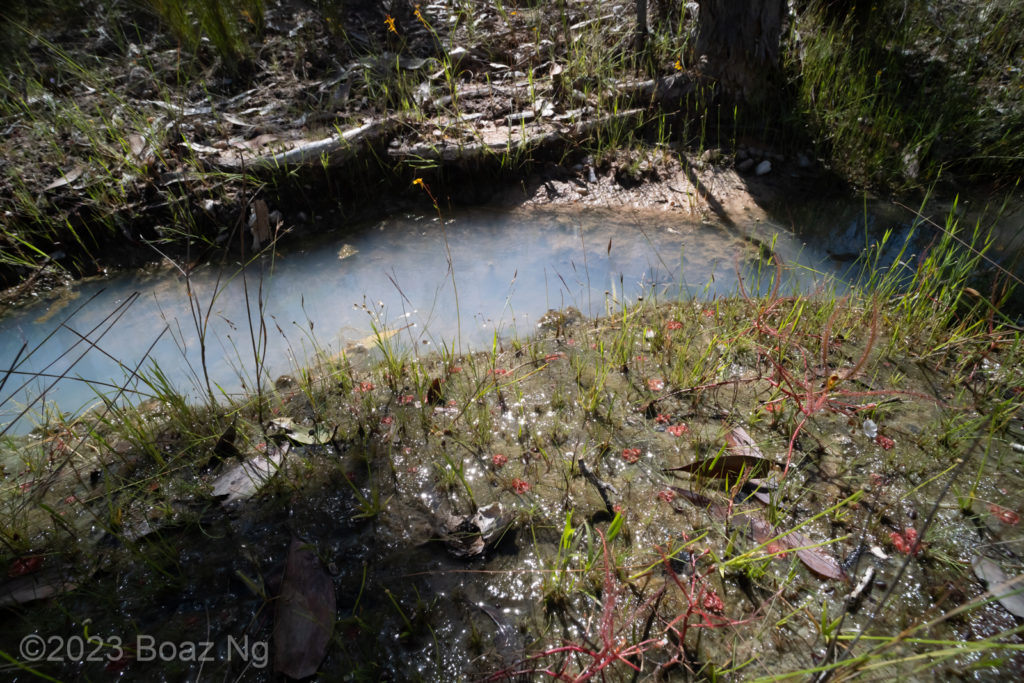
Byblis aquatica is also found in these seepages. As its name suggests, the species prefers seasonally wet habitats. In the tropical savannah, the plants grow as an annual and set seed before the seepages run dry. It can be distinguished from B. liniflora by its short tentacles, trailing stem and more vibrantly pink flowers.
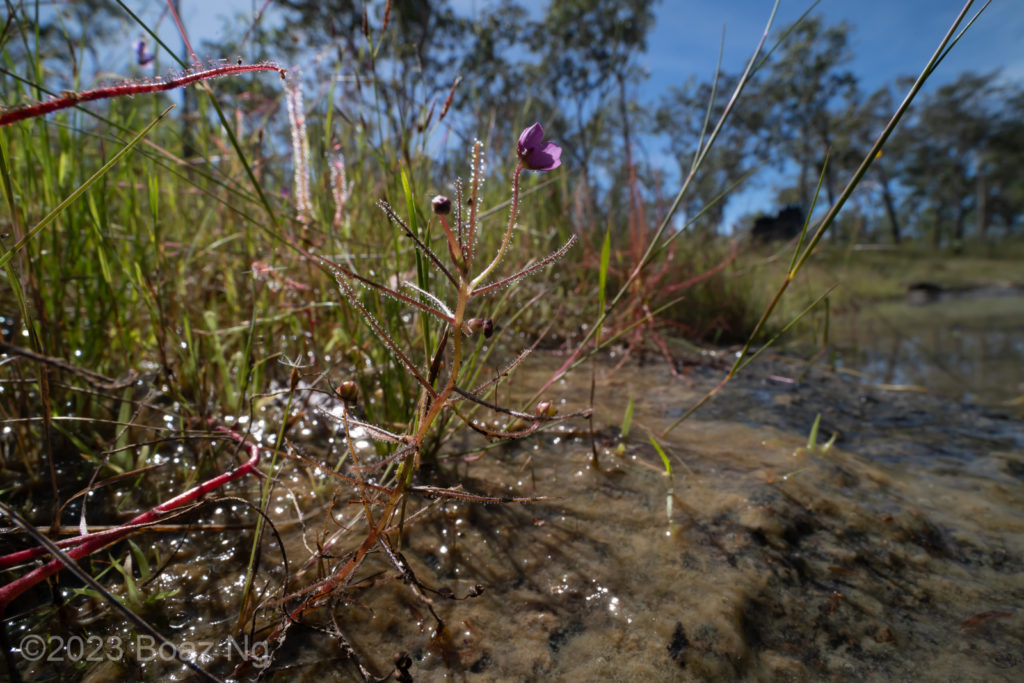
Another annual species that likes these wet seepages is Drosera banksii. Despite its long stem and sparse leaves, genetic studies show that it is taxonomically placed within the section Lasiocephala, or the ‘wooly sundews’. Unlike most other members of the petiolaris complex, this species is not able to enter a dry-season dormancy and so must regenerate from seed every year.
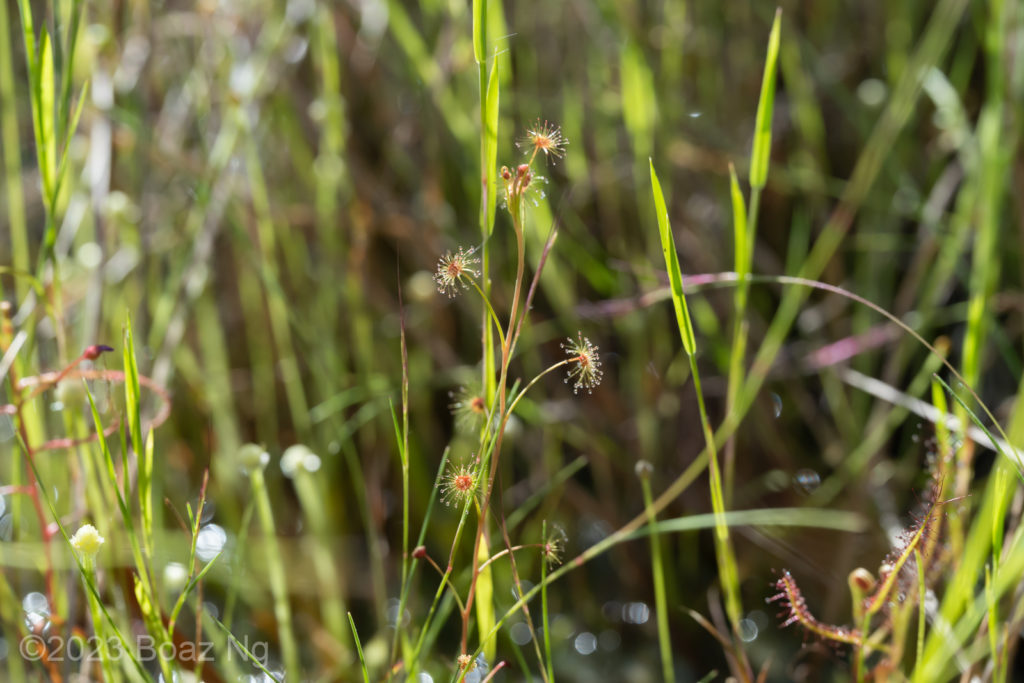
As the groundwater begins to dry up, Utricularia chrysantha comes to bloom. The species is one of the last bladderworts to flower in the dry season, producing long garlands of showy yellow flowers just as the soil begins to desiccate. In the right habitat, the plants can produce a stunning en mass blooming display, colouring entire creeklines with yellow.
